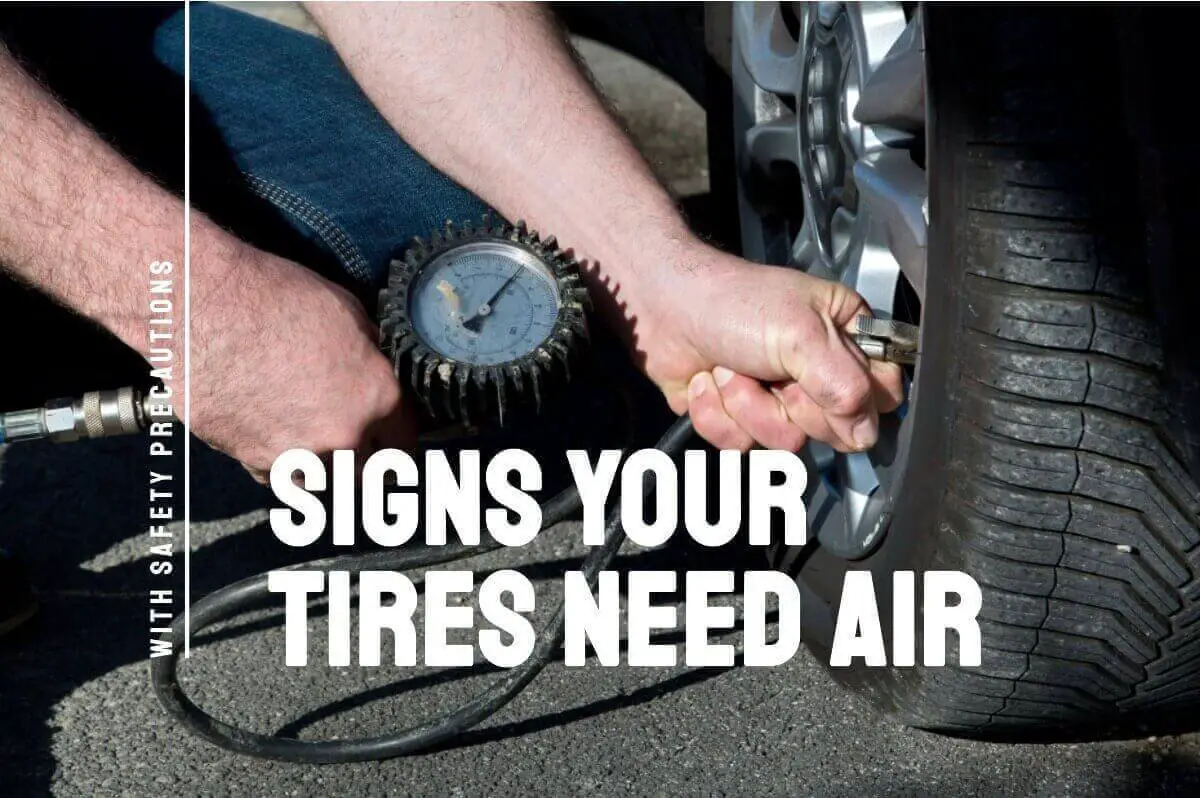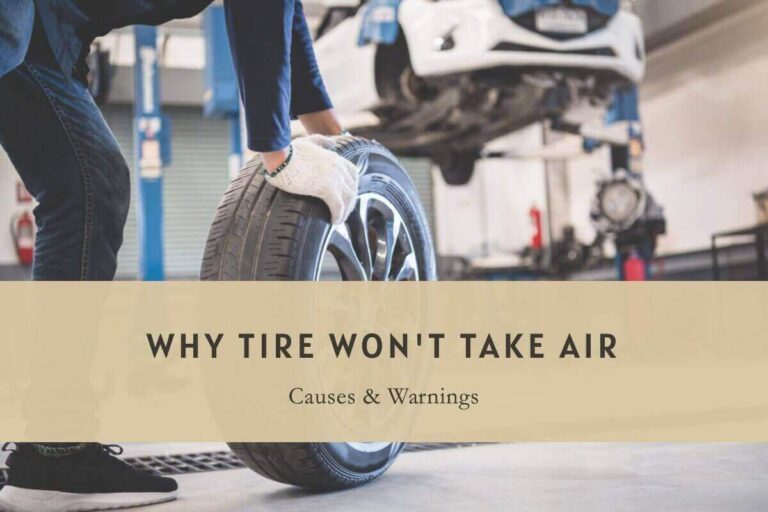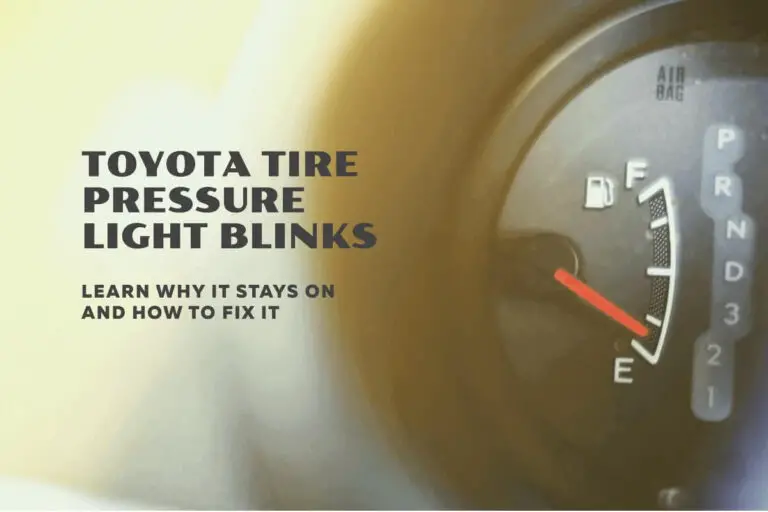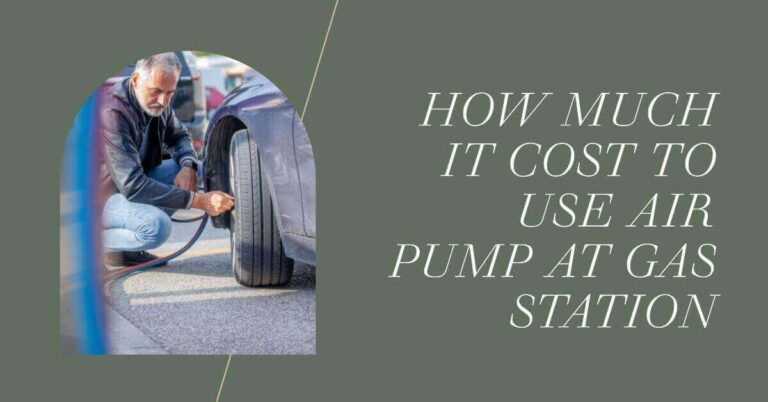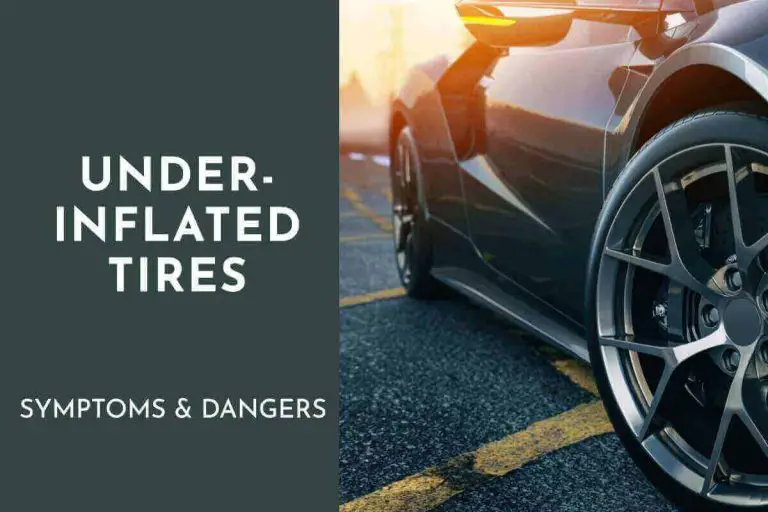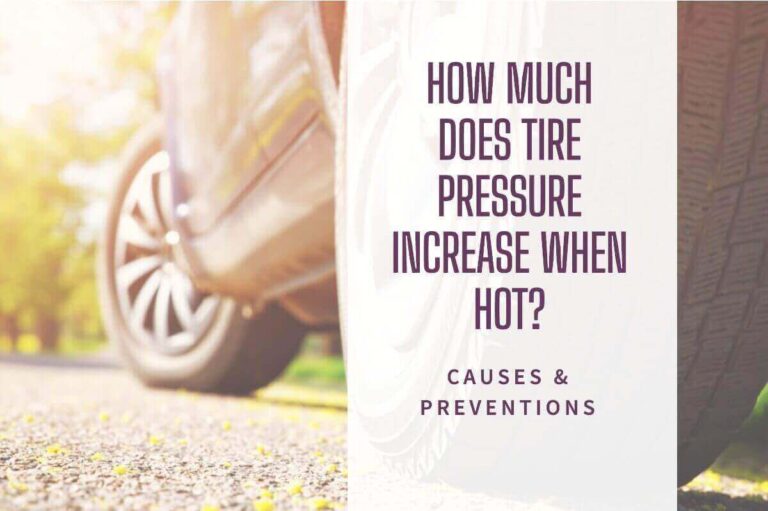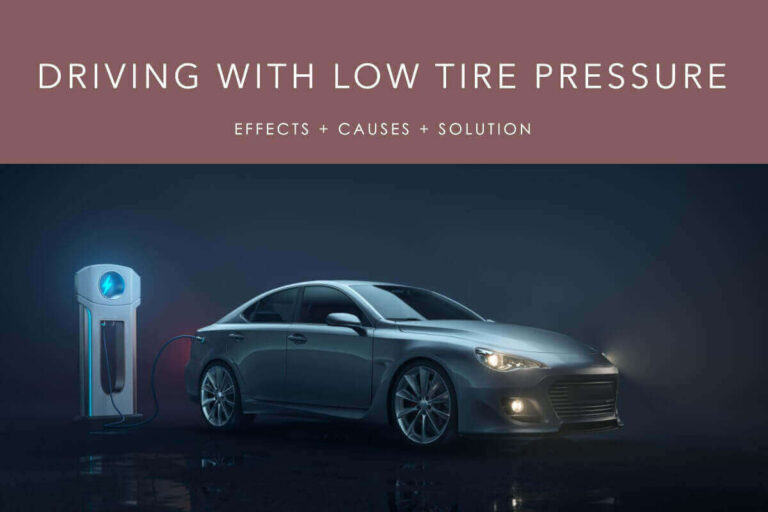Tires are an essential part of your car, and it is important to keep them inflated. If your tires are low on air, it can affect your gas mileage and handling. It is also unsafe to drive on underinflated tires.
Let’s discuss in detail how to know if a tire is flat while driving and the safety precautions.
8 Signs Your Tires Need Air
Your car’s tires are one of the most critical safety features, so it’s important to check them regularly. Here are some signs that your tires might need air:
1. Uneven Tire Wear
If you notice that your tires are wearing unevenly, you should first check the air pressure. If the pressure is low, inflating the tires to the proper level should fix the problem. If low tire pressure isn’t the issue, then it’s likely that your tires are overloaded or misaligned. Overloading can cause premature tread wear, while misalignment can cause uneven wear patterns.
2. Tires Are Low On Pressure
Tires are low on pressure when they don’t have the right amount of air. It can happen for several reasons, but the most common reason is a leak. If you suspect that your tires are low on pressure, there are a few things you can do to check.
Take a look at the sidewall of the tire. There should be a number that indicates the minimum amount of air pressure that the tire can have. If the number on the sidewall is lower than what’s recommended, then it’s time to add some air to your tires.
3. Tires Are Old
Tires are made of rubber, and they don’t last forever. So, it’s also a sign of low air in tires and their time for a replacement. Regularly check your tire’s tread depth (the distance between the top of the tire and the road when it is inflated). Don’t wait until you have a flat to find out that your tires are worn down too thin.
4. Car is Pulling To One Side
If you’re driving and notice your car is pulling to one side, it’s a sign that something is wrong. It could be a tire that needs air, or it could be something more serious. But if the problem is with your alignment or suspension, it’s much more serious and expensive to fix.
5. Tires Are Making Noise
Your car’s tires are one of the most important parts of the vehicle, and keeping them in good condition is crucial for a safe ride. If your tires are making noise, it could be a sign that they need air. Don’t wait until your tires are completely flat – address the problem as soon as you notice it to avoid any potential accidents.
6. Steering Feels Loose
If your steering feels loose, it’s essential to check it out immediately. This is because it can be a safety issue. When your tires don’t have enough air, they also can’t grip the road. It can make it harder to control your car, especially in slippery conditions.
7. Tires Look Flat
It is also the sign of a flat tire when your tires look flat. If you notice a car tire looks flat, it is probably because there’s not enough air in the tire. You must make sure that you don’t drive on a flat tire because it can make the tire blow out and cause a serious accident. You should address this problem immediately by stopping at a nearby gas station or auto shop to get your tires checked.
8. Tires Feel Hot To Touch
If you notice that your tires feel hot to the touch, it’s a sign that they may be low on air or over-inflated. It can cause damage to the tire and potentially lead to a blowout. If you’re unsure how to check your tire pressure, consult your car’s owner’s manual or take it to a professional mechanic.
Above are all the signs that your tire is going to fall off or need air, and you should visit a tire shop immediately.
What Happens If You Drive With Low Air in Your Tires?
If you’re like most drivers, you probably don’t think much about your tires until there’s a problem. But did you know that driving with low air in your tires can actually be dangerous?
It’s true! Low tire pressure can cause your tires to overheat and even burst. It can also impact your car’s handling and fuel economy. So, if you’re wondering what happens if you drive with low air in your tires, read on to find out.
How To Know If The Tire Is Flat While Driving?
It’s happened to all of us. You’re driving along and suddenly realize that one of your tires is flat. But how did you know? If you’re unsure how to tell if a tire is flat while driving, here are a few signs to look for.
When your tire is flat while driving if the car starts to pull to one side, it happens because the car’s weight is no longer evenly distributed on all four tires; if you notice your car pulling, it’s time to check your tires.
Also, when your tire is flat while driving is if you feel a vibration in the steering wheel or seat. It happens because the tire can no longer grip the road properly, causing it to vibrate. If you feel a vibration, it’s time to check your tires.
What Are The Warning Signs Of Tire Failure?
There are many signs of warning of a tire failure. Some of them are given below:
Excessive Vibration
It is a warning of tire failure, which means that the tire has a problem. You can feel this vibration in the steering wheel or seat. Your tires should not be shaking when you are driving. It is a sign of tire failure and can have serious consequences for your safety and health, so you should check the tire pressure immediately.
Bulges Or Blisters
If you notice your tires are starting to bulge or blister, it’s time to check your tire because it’s a sign of tire failure, and you should replace them. You should check the tire pressure immediately and avoid driving in your vehicle because it can cause a serious accident.
Cracking Or Cuts in The Sidewalls
If you notice any cracks or cuts in the sidewalls of your tires, it’s time to take them to a mechanic. These cracks can cause the tire to blow out. A blown tire can be extremely dangerous, so it’s essential to keep an eye on the condition of your tires and get them serviced when needed.
Excessively Worn Tread
If you can see the tops of your tire’s tread wear bars, your tread is excessively worn, and you need new tires. Many factors, including improper inflation, misalignment, or uneven weight distribution on your vehicle, can cause excessive tread wear. If you’re not sure what’s causing the excessive wear, take your car to a qualified technician for an inspection.
Safety Precautions of Low Air Pressure
When it comes to your car, one of the most important things to pay attention to is your tires. Your tires keep you moving forward, and they can be dangerous if they’re not in good condition. You should always watch out for the low air in your tires. Here are some safety precautions about low air in a tire that you should know.
- Check your tire pressure regularly. A good rule of thumb is to check it at least once a month.
- If your tire pressure is low, add air as soon as possible.
- Don’t drive on bald or damaged tires. If your tires are in bad shape, they’re more likely to fail at high speeds.
- Avoid driving in extreme weather conditions if possible. Hot weather can cause tires to lose pressure, while cold weather can make them brittle and more likely to break.
- Don’t drive on a flat tire. If your tire is punctured, the pressure will leak out, and you’ll be driving on an underinflated tire.
Conclusion – Signs Your Tires Need Air
If you notice any of the above signs, it’s time to add air to your tires. You can do this by purchasing a tire gauge and an air compressor. Most gas stations also have air pumps that you can use for free. Simply insert the tire gauge into the valve stem on your tire and check the pressure. If it’s low, add air until it reaches the ideal PSI.
Tires can lose air for many reasons, including leaks in the tire or rim or simply from driving on rough roads. If your tires are low on air, check them as soon as possible and add air if needed.
I hope this article about the signs your tires need air has been helpful to you. If you have any questions, please ask in the comment section below.
FAQs
What Does A Low Tire Feel Like?
If you’re driving and suddenly feel your car start to vibrate, you likely have a low tire. The vibration is caused by the tire hitting the ground as it rotates. It can be very dangerous, so pulling over and checking your tires as soon as possible is important.
How Often Should You Fill The Air In Your Tires?
It’s best to check your tire pressure at least once a month. You can do this easily with a tire pressure gauge. If your tires are low on air, fill them up with an air compressor or at a gas station.
How Far Can I Drive With No Air In My Tire?
You can drive for a short distance with no air in your tire, but it is not safe and will damage your tire. It is best to add air as soon as possible.
Is Low Tire Pressure Urgent?
It depends on the severity of the leak. You can wait to inflate your tires if you have a slow leak. However, if you have a fast leak, it’s best to inflate your tires as soon as possible.
How Long Should Tires Last?
Tires are designed to last for a certain number of miles, and how long they actually last depends on several factors, including driving habits, road conditions, and tire maintenance. With proper care and regular maintenance, tires can last about five years.
What Is The Most Common Tire Issue?
The most common tire issue is a flat tire. A flat tire can be caused by a puncture, a leak, or running over something sharp. If you have a flat tire, the best thing to do is to replace it with a new one as soon as possible.
Can You Feel When Your Tires Are Bad?
Yes, you can feel it when your tires are bad. The car will feel less stable and may pull to one side. You may also feel vibrations in the steering wheel or seat.

